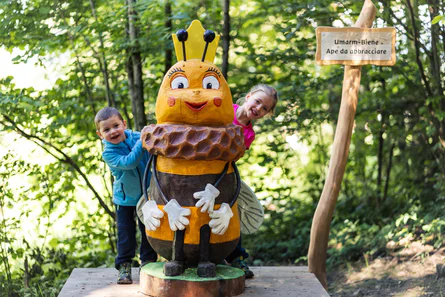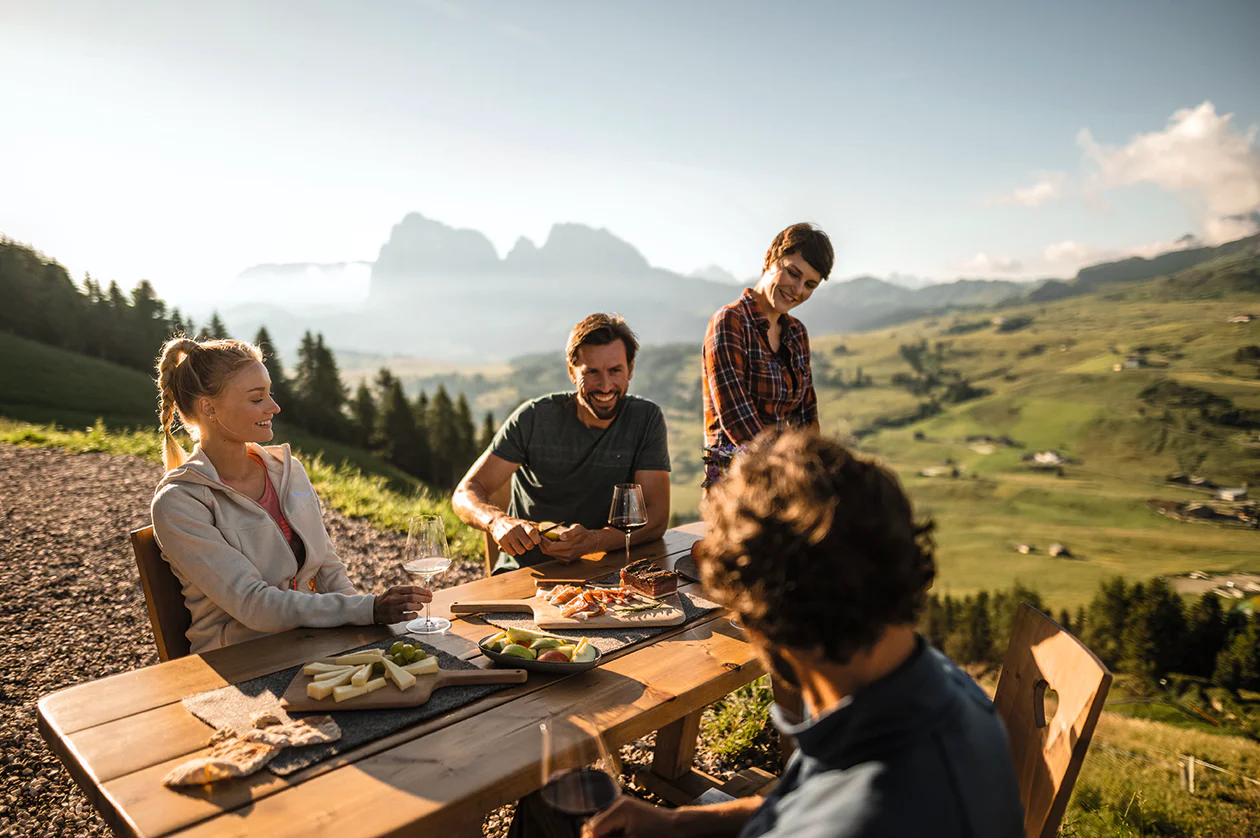The new Mushroom Trail starts at the kids playground "Aue"in St. Jakob in the Pfitsch Valley near Sterzing and extends one kilometer through the forest. Information panels along the themed trail inform hikers about the world of mushrooms, their reproduction, and their uses.
The life-sized mushrooms were mainly crafted from wooden elements with a uniform design to ensure recognizability along the entire themed trail. The Mushroom Trail is easy for everyone to walk and offers children and school groups the unique opportunity to learn about the life of mushrooms. Additionally, the themed trail provides visitors with an interesting recreational activity in the forests of the Pfitsch Valley.
This project was realized by the Tourism Cooperative of Sterzing – Pfitsch – Freienfeld.






































































































































